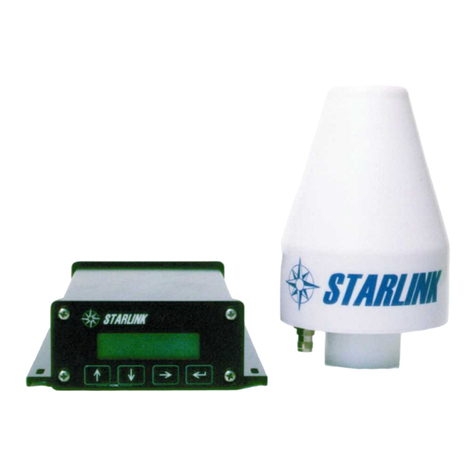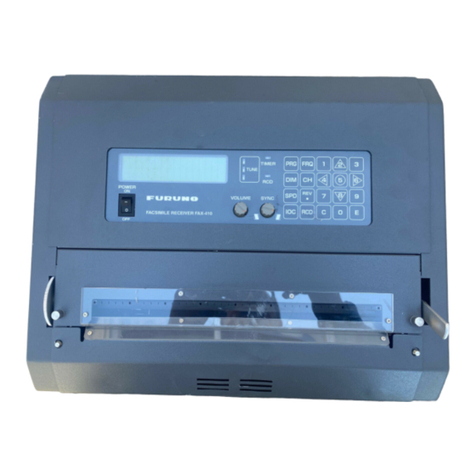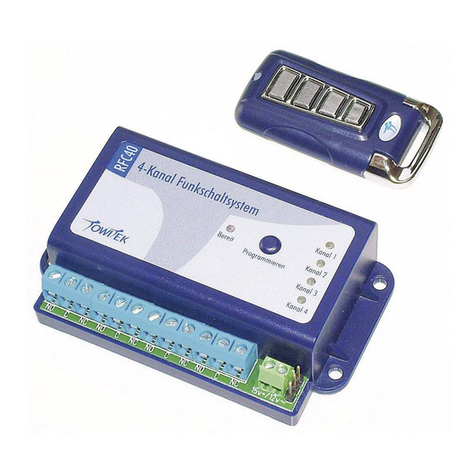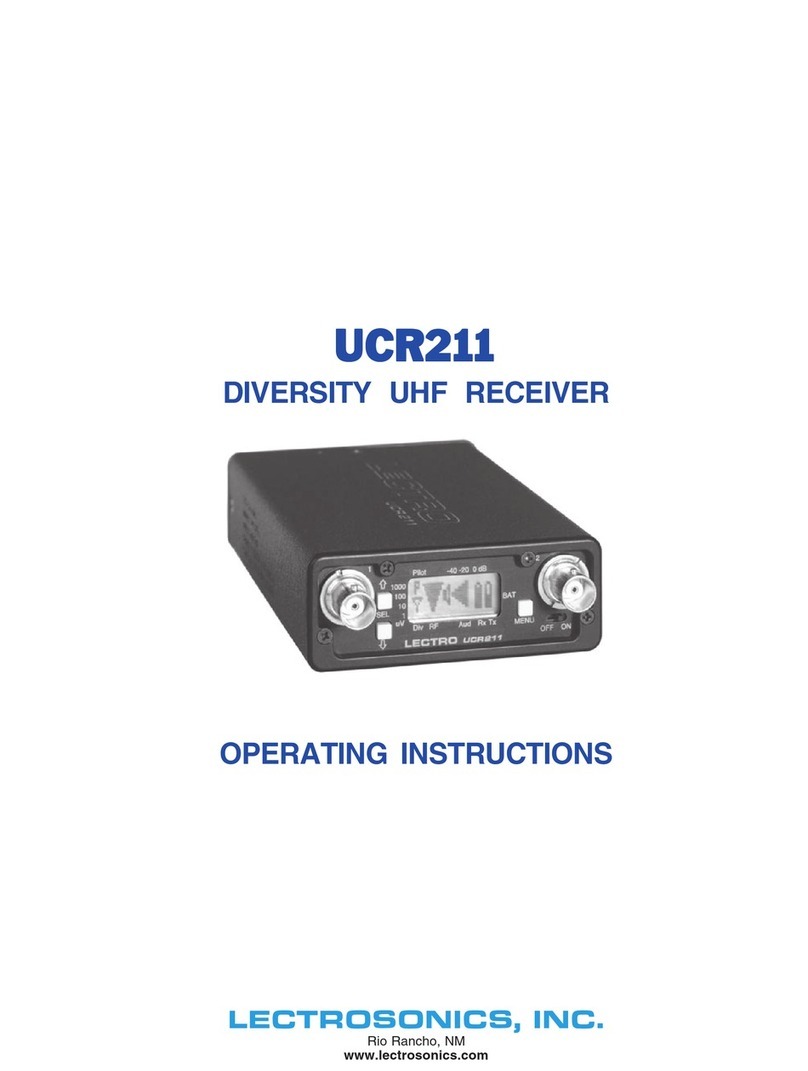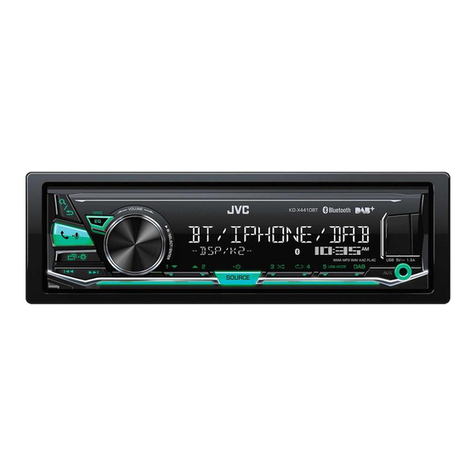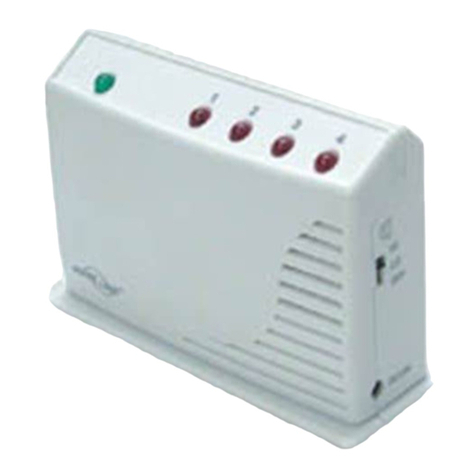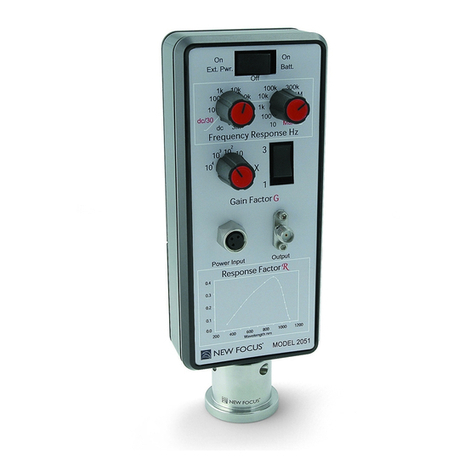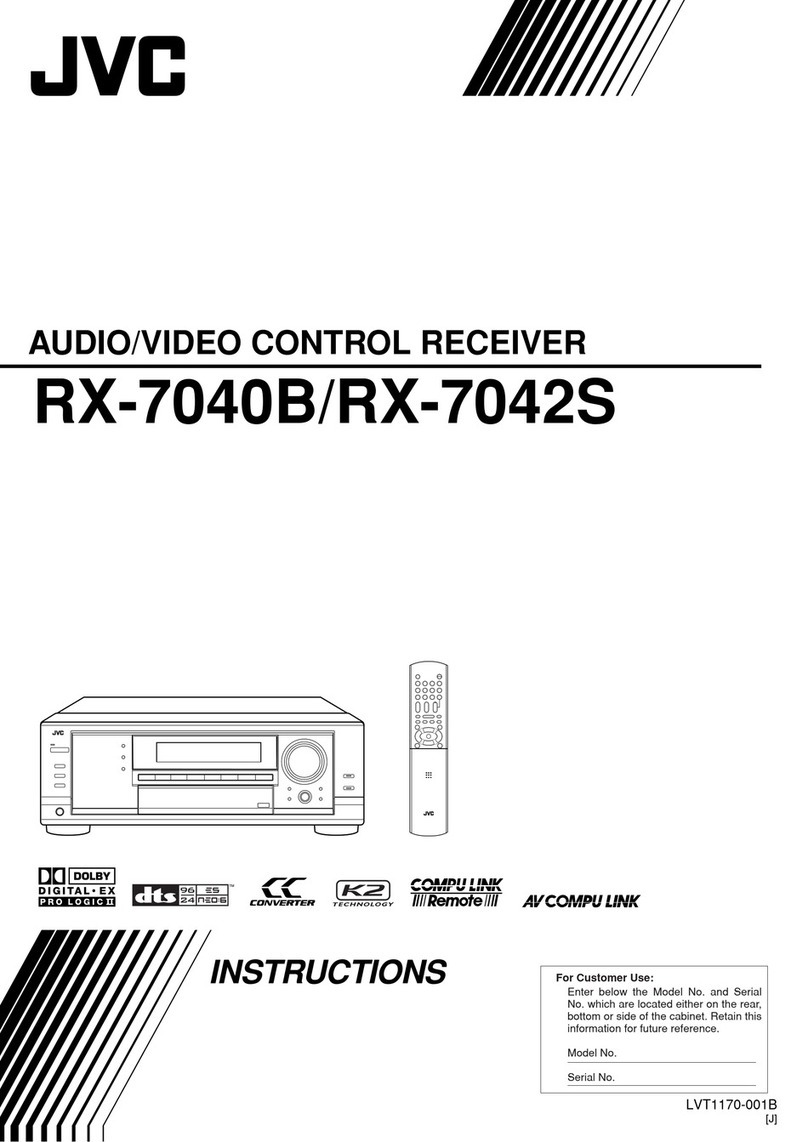STARLINK Invicta 210L User manual

Invicta®210L
Operation Manual
Products and Services for Professional (D)GPS Users

Starlink Incorporated
500 Center Ridge Drive
Suite 600
Austin, TX. 78753
Voice: 1-512-454-5511
FAX: 1-512-454-5570
www.starlinkdgps.com
Copyrights
© 1999, 2000, 2001 Starlink Incorporated. All rights reserved. No part of this manual may be copied,
photocopied, reproduced, translated, or reduced to any electronic medium or machine-readable form
without prior written consent from Starlink Incorporated.
Printed in the United States of America.
Part Number 016-0171-096 Rev B

Starlink Incorporated
Invicta 210L Operation Manual page 3of 20
Table of Contents
Introduction....................................................................................................... 4
Functional Description ...................................................................................... 4
GPS Receiver .................................................................................................... 4
MSK Radiobeacon Receiver ............................................................................. 5
TBA-2 Antenna................................................................................................. 5
Utility Software................................................................................................. 6
Receiver Firmware updates............................................................................... 6
Special Features ................................................................................................ 6
PPS Out...................................................................................................... 6
Radar Out ................................................................................................... 6
Speed Log .................................................................................................. 7
Heading Message Forwarding.................................................................... 7
Advanced Message Forwarding................................................................. 7
Installation......................................................................................................... 8
Initial Power up.......................................................................................... 8
Power ....................................................................................................... 10
TBA-2 Antenna........................................................................................ 10
Antenna Cable.......................................................................................... 11
Operation......................................................................................................... 12
Initial Startup ........................................................................................... 12
Normal Operation .................................................................................... 12
Troubleshooting .............................................................................................. 13
Checking your installation ....................................................................... 13
Receiver Specifications ................................................................................... 14
Antenna .................................................................................................... 14
Configuration .................................................................................................. 15
Rear Panel Serial Interface....................................................................... 15
Global Positioning System (GPS) ................................................................... 16
Differential GPS (DGPS) Beacon ................................................................... 17
NMEA Messages ............................................................................................ 18
Sample GGA Message Structure..................................................................... 19
Warranty.......................................................................................................... 20

Starlink Incorporated
page 4of 20 Invicta 210L Operation Manual
Introduction
The Starlink Invicta® 210L GPS receiver will provide you with highly accurate and reliable
DGPS navigation in the smallest and lightest package currently offered by Starlink. This receiver
is ideal for GIS, professional marine, precision farming or any other application where a high
perfor-mance, rugged, and simple to operate receiver is required.
Functional Description
The Starlink Invicta® 210L is a 10 channel high-performance GPS receiver with a built-in DGPS
correction receiver. You can select the built-in MSK Radiobeacon receiver or use an external
RTCM source for your DGPS corrections. You can even let the receiver automatically select its
correction source by using the auto DGPS input mode. (Unlike the 210S, the 210L does not
support DGPS corrections from an OmniStar satellite.)
DGPS corrections are needed to improve the accuracy of standard GPS. If you operate without
DGPS corrections, the accuracy will be about 10 meters RMS. This means the receiver can have
errors as far off as 33 feet in any direction 67% of the time, and greater 33% of the time. Prior to
the government turning off Selective Availability (SA), this error was 100 meters RMS. With
DGPS corrections, the receiver can give you positions with a RMS accuracy of 1-meter (an error
equal to about the length of your arm in any direction).
Reference stations measure GPS errors and broadcast correction messages. The Invicta receives
these DGPS corrections from a free radiobeacon and produces accurate position reports.
For the functional description we can break the Invicta 210L into several parts. Each is described
in the following sections.
GPS Receiver
The Invicta 210L GPS receiver provides real-time positions with a RMS accuracy of 1-meter. The
receiver can generate position solutions once per second or optionally at 10 solutions per second.
Position solutions are output via RS232 in NMEA format messages.
The Invicta 210L has two RS232 ports and can communicate at 1200, 2400, 4800, 9600, 19.2K, or
38.4K BPS on either/both port(s). The baud rate and the desired output messages can be
configured via the serial port using configuration messages.
NMEA format messages are standard for most GPS receivers and therefore should be compatible
with almost any software or hardware application designed to work with GPS. A document
describing the NMEA messages supported by the Invicta is available on the Starlink web site.

Starlink Incorporated
Invicta 210L Operation Manual page 5of 20
MSK Radiobeacon Receiver
Invicta receivers include a dual-channel beacon receiver with advanced impulse noise processing.
USCG, Canadian, or IALA (International Association of Lighthouse Authorities) beacon stations
can be used to provide free DGPS corrections for ranges of up to 300 miles.
Dual channels are used to provide reliable automatic station selection. The receiver can track one
beacon to get corrections and use the other channel to test for new or better stations. The switch
between an old and a new beacon occurs instantly with no loss of differential data.
The receiver actually has a third channel to detect impulse noise. Impulse noise is caused by
thunderstorms or by man made sources such as the ignition system on a car. The third channel
detects these pops and clicks in the signal and automatically removes them. Starlink has always
been the absolute leader in impulse noise processing which is the real performance-limiting factor
in beacon receiver design.
TBA-2 Antenna
The TBA-2 antenna combines the GPS and radiobeacon antennas into a single package, and is our
smallest antenna. The antenna can be mounted using a standard marine mount (1”-14), or as an
option to either a survey pole mount (5/8”-11) or to a metal surface using a magnetic mount adapter.
The survey pole and magnetic mount adapters are available separately from Starlink.

Starlink Incorporated
page 6of 20 Invicta 210L Operation Manual
Utility Software
Utility software is not required to setup or use the receiver in most applications. However, several
utility programs are available from Starlink. You can get these programs free from the Starlink
web site at http://www.starlinkdgps.com.
Receiver Firmware updates
Firmware is the software which resides inside the receiver. Starlink continues to improve the
performance of its receiver products and sometimes makes special features available. When this
happens, a new version of firmware is created. You can download this firmware at no additional
cost from the Starlink web site. You will need to connect the receiver to a PC and run the included
programming software to update the unit. You should check the web site every month for a new
version of firmware.
It should be noted that updates cover such things as bug fixes and performance enhancements.
Sometimes upgrades can also be programmed into the receiver using the utility software. Up-
grades also include things such as the 10 position solutions per second option, which does have
additional cost. The good thing is that you can install these upgrades and updates. You will need to
get a code from Starlink to install the upgrades but the process is simple.
Special Features
The Invicta has several special features that make it ideal for some applications. Starlink is always
interested in adding special features to the Invicta receiver. If you have a good idea, please send us
an email at idea@starlinkdgps.com or give us a call at 800-460-2167. We can’t guarantee that
your idea will be implemented but we do want to consider it.
PPS Out
The PPS output is normally used to provide a timing signal to another device. PPS
stands for Pulse Per Second and that’s what the signal does. Once each second the
signal pulses to indicate the start of a GPS second. The GPS second is a time reference,
which can be used to synchronize systems. If your application requires very accurate
time then the PPS output may be required.
The PPS output can also be used as a RADAR or Speed Log output as described in the
following sections.
Radar Out
The Invicta receivers can simulate a Doppler RADAR commonly used on agricultural
equipment for detecting speed. The GPS receiver is always calculating speed and can
generate the signals, which you would get from a RADAR unit.

Starlink Incorporated
Invicta 210L Operation Manual page 7of 20
To use this feature you will need a special cable from Starlink. It should be noted that
the GPS can only determine speed when it’s navigating. If a tree line blocks too many
satellites or if for some other reason the Invicta is unable to navigate, then the RADAR
output could become invalid.
The scaling factors and timing controls that govern the operation of this feature can be
controlled via a serial configuration message as defined in the Serial Protocol
Definition document. The receiver uses default settings that should provide reasonable
operation without the need for special configuration.
Speed Log
Speed logs are commonly used in marine applications to keep charts aligned on ARPA
RADAR displays. ARPA RADAR is similar to the RADAR systems used by air traffic
controllers but is found on large ships. The user can watch for other ships and even
navigate by looking at the display. Some of these displays have a map overlay that
must be moved as the ship moves.
To keep the map displayed correctly, the ARPA gets data from a gyro-compass for
direction and a speed log device for speed. Speed logs are typically made from a
paddle wheel, which sits in the water and spins as the ship moves along.
The speed log output from the Invicta simulates the speed log device and provides
considerably better performance. The normal speed log device is subject to errors
caused by currents and is often slow to respond to changes in the ship speed. The
Invicta generates the same signals as does the speed log but is not subject to errors
caused by currents.
To use this feature you will need a special cable from Starlink. The scaling factors and
timing controls that govern the operation of this feature can be controlled via a serial
configuration message. The receiver uses default settings that should provide
reasonable operation without the need for special configuration.
Heading Message Forwarding
NMEA heading messages received on Port B (Aux Port) of the Invicta will
automatically be forwarded to Port A. This is especially useful in applications where a
limited number of serial ports are available for interfacing. For example, a marine
charting system can be made using a standard laptop with only a single serial port.
The Invicta would be tied to the PC and the heading sensor would be tied to the
Invicta. The PC charting program would receive both the GPS position messages and
the heading messages using only the one serial port.
Advanced Message Forwarding
The Invicta series receiver supports advanced message forwarding in systems where
the application is designed to take full advantage of this feature. When enabled, all
messages received on Port B of the receiver will be time tagged with GPS time and
output on Port A in a special format.

Starlink Incorporated
page 8of 20 Invicta 210L Operation Manual
The special format is basically just a prefix that includes the time tag. The time tag is
very important since it is referenced to GPS time and provided with millisecond
resolution. It can be used to completely eliminate latency issues. Latency is usually
only an issue in systems where GPS positions are used to locate data coming from
another sensor such as a depth sounder. If not accounted for, the latency of output can
show up as positional errors.
The advanced message forwarding takes care of latency problems in systems where the
other sensor can output NMEA style messages. This feature would also be useful in
systems with limited serial ports if the application developer were to take advantage of
this feature.
Installation
Start by selecting a location for each of the various parts of the system. The antenna, for example,
should be carefully located per the guidelines given below. Do not route the cables or
permanently mount the antenna or receiver yet. Once the system is operating, then you can route
the cables and permanently mount the receiver and antenna. This way, you won’t have as much
trouble if a problem is found in your initial locations.
Initial Power up
Invicta receivers are reverse power protected so you should not hurt the receiver if you
follow these steps:
Make sure the receiver is not touching any metal surfaces. Place a piece of paper or
something between the receiver and the metal surface if necessary. If you have the
power backwards, a short will exist between the grounded metal surface and the
ground lead (which is power by accident). This short could burn up the ground wire or
blow a fuse. It’s a good idea to isolate the receiver from your chassis the first time it’s
powered up.
Connect the antenna to the receiver but don’t connect any of the other cables. Right
now you should have the antenna temporarily mounted and connected to the Invicta.
You should be ready to apply power.
Turn off all the equipment on your machine. You should have enough battery power
to run the Invicta for an hour or so. You want the other equipment off because it might
interfere with the receiver. Once you get the Invicta working, you will turn on the
other equipment and watch for problems.

Starlink Incorporated
Invicta 210L Operation Manual page 9of 20
Connect the serial cable provided between the Invicta 210L and your computer. Apply
power to the receiver. Watch the red LED power indicator. It should light up. If it does
not, you either don’t have power or power is connected backwards. If you’re in a car,
try turning the key on. Check the connections and try again. If you still have trouble,
refer to the Power section below. The yellow beacon status LED should blink then go
out until a correction signal is located. If the beacon status light is flashing rapidly (4
times per second), the antenna cable is either open or shorted.
Once you have the receiver power connected correctly go ahead and shut the power
off. Mount the receiver and repeat the previous step. If the power does not work when
you mount the receiver then you may have a positive ground system. If so, the fuse is
probably blown. You will need to isolate the receiver from your chassis at all times in
systems with positive grounds.
At this point, we have the power connected to the mounted receiver and the antenna is
connected. Watch the green LED GPS satellite tracking indicator. The Invicta will be
looking for satellites, which may take a few minutes. Eventually, if your antenna has a
clear view of the sky, the GPS light will flash once for each satellite in view that it is
using to calculate its position.
All configuration and beacon frequency data is stored in non-volatile memory inside
the Invicta 210L. If you need to change the beacon or GPS setups, you can run the
receiver software to make the changes.
If you’re using radiobeacon corrections, it could take 15 or more minutes before the
receiver finds a station. This initial startup time is necessary only during the first time
you use the receiver. Once a station is found the receiver will power up and start
receiving signals after about 5 seconds. If you don’t get a signal within about 30
minutes there could be some form of interference or you may not be in range of a
radiobeacon.
At this point, your receiver should be tracking satellites and generating good
differential positions. Start turning on the other equipment on your machine. As each
device is turned on, watch the LED status indicators for problems. A device could
interfere with the GPS satellites or radiobeacon signals. You should wait about 30
seconds after each device is turned on to see if the receiver stays in differential mode.
Finally, start up the machine and again watch for any problems.
If after you turn something on a problem is found, you can try moving the antenna
further away from that device. Check that the device is functioning properly and also
check its power connections. Some devices can generate too much noise naturally or
because of defective components. A common source of considerable interference is
power inverters. These devices take 12 VDC and make 110VAC. If you’re using one
of these inverters, you may have to buy a better model to reduce the noise produced.

Starlink Incorporated
page 10 of 20 Invicta 210L Operation Manual
Now you have the receiver working with everything that could interfere. Shut
everything off, mount the antenna, and route the cables. Once this is done, repeat the
power up steps.
The last few steps deal with connecting the other equipment that gets data from the
Invicta. Refer to the manufacturer’s documentation for details such as baud rates and
required messages. It is very likely that you only need to connect the interface cable to
the device. The Invicta is configured, by default, to work with most systems without
any adjustments.
Power
The Invicta receiver needs DC power between 10 and 32 Volts. DC power is usually
provided by a battery on the machine or via a power adapter of some type. If your unit
came with an automotive power adapter, verify that your vehicle has a negative ground
system before you connect to power. If your unit came with an AC adapter, you need
only connect the adapter to an AC source.
TBA-2 Antenna
GPS is a line-of-sight system, which means in order for the receiver to track the
satellites there must be an unobstructed path directly to them. Buildings, trees,
machinery, and human bodies are common obstructions. When locating the antenna,
find a place where the antenna will have an unobstructed view of the sky.
Items such as electrical motors, generators, alternators, strobe lights, radio transmitters,
cellular phones, microwave dishes, radar, active antennas, etc., all generate electrical
and magnetic fields which can interfere with the GPS or Beacon radio signal. Mount
the antenna away from such potential sources of interference.
The GPS can be de-tuned by close proximity to other objects. For example, if you
place the antenna under fiberglass its performance could be degraded. Usually, if you
lower the antenna so that at least a quarter of an inch gap is made between the antenna
and the covering plastic or fiberglass, acceptable performance can be achieved. Metal
or other dense materials will completely block the GPS signals.
Starlink beacon antennas use magnetic sensing technology. The primary advantage of
this technology is that no electrical grounding is required.
Since the antenna is sensitive to magnetic fields, you should keep it away from any
wiring. The wiring will radiate magnetic fields and could interfere. High-tension
power lines can also interfere.
The antenna is relatively insensitive to electric noise generated by alternators or spark
plugs, but these noise sources can still interfere. A common source of interference is
DC motors, which use brushes (the fan blower motor in your car is an example).
Power inverters, which convert DC to 110VAC, often produce considerable
interference.

Starlink Incorporated
Invicta 210L Operation Manual page 11 of 20
The antenna can be erected on a standard (one inch diameter, 14 thread per inch)
marine antenna mount. Magnetic mounts and threaded survey pole adapters are also
available.
WARNING !!
Do not tighten the antenna on the marine antenna mount by turning on the
antenna cover. Hold the mounting shaft located at the bottom of the antenna
and tighten by hand. Do not thread the shaft deeper than ¾”.
Antenna Cable
The antenna cable should be routed around your machine so that it’s out of the way.
Make sure it is not subject to scraping or excessively sharp bending. Also, make sure
the antenna cable has some slack. It needs just enough to prevent strain on the
connections.
It’s important that the cables plastic cover is never broken. Make sure that the cable is
routed away from sharp or abrasive surfaces. Also, make sure the metal surfaces of the
connectors on the cable do not come in contact with the chassis of your machine.
The antenna cable is available in several lengths. If the cable supplied with your
system is too long or short, contact Starlink for an optional replacement cable. The
Invicta will work fine with a long cable but you may prefer a short cable in your
application.

Starlink Incorporated
page 12 of 20 Invicta 210L Operation Manual
Operation
Initial Startup
Both the internal GPS and Beacon receiver must perform a Cold Start the first time
you power up the system. The GPS receiver will search the sky for satellites and
download data necessary for operation. The beacon receiver will perform an auto scan
using both receiver channels until a DGPS beacon signal is obtained. The cold start
will take up to 15 minutes but is only required during the initial power up.
Always make sure the antenna is connected to the receiver before powering the unit.
Connect the serial cable provided between the Invicta 210L and your computer, apply
power and verify that the red power LED is on. Allow the receiver to operate while
you install the software program on your computer. Turn off all unnecessary electrical
equipment to minimize electrical noise interference.
Normal Operation
Upon completion of the initial “Cold Start”, the receiver begins to operate in “Normal
Mode”. The unit should be operating in full DGPS mode within a few minutes of
power on.
All configuration and beacon frequency data is stored in nonvolatile memory inside the
Invicta 210L. Configuration changes are made with utility software.
Be aware of possible satellite obstructions, which may interfere with GPS operation.
For high precision applications, watch your Horizontal Dilution of Precision (HDOP)
and Beacon Age of Data (AOD). The HDOP should be 2 or less and the AOD less than
15 seconds.

Starlink Incorporated
Invicta 210L Operation Manual page 13 of 20
Troubleshooting
*Make certain the antenna is mounted so that it has a clear view of the sky and is as far away from
electrical noise sources as possible.
Attempt to isolate all problems as either:
•Receiver
•Antenna (including cables)
•Power
•Transmitting Site
•Serial Communications
a. Receiver
b. Peripheral device
Checking your installation
Monitor the effects on the beacon and GPS receiver performance as each device on
your vehicle is powered on. If the receiver stops operating properly when a device is
powered on, that device is causing interference and your antenna location may need to
change. For example, if running your engine causes interference, then ignition noise or
alternator noise is interfering with signal reception. Move the antenna further away
from the engine.
Receiver - Normally only 5 GPS satellites are required for good accuracy. View
the LED status indicator on the front panel and check the number of
satellites being tracked. Also look for the yellow beacon light indicating
good differential reception.
Antenna - Check connections between the antenna and receiver. Verify the
connectors and cable are in good condition. An ohm meter can be used
to determine if the antenna cable is open or shorted.
Power - Red power LED remains lit while power is applied.
Transmitting - If the receiver is operating in Beacon Mode, you may be out of range of
a beacon site or the beacon may be off air. Beacon status information is
available on the internet at www.navcen.uscg.mil.
Serial Coms - Using GPS Mon software, check for proper communication settings
baud rate, and com port number. Make sure the cable you use, if not
provided by Starlink, is wired correctly. See section titled “Rear Panel
Serial Interface”.

Starlink Incorporated
page 14 of 20 Invicta 210L Operation Manual
Receiver Specifications
Position Accuracy <1.0 meters rms Operating Temperature -40°C to +70°C
Timing Accuracy N/A Optional Features 10 solutions per sec
Number of Channels 10 GPS, 2 Beacon Maximum Velocity 1000 Knots
Frequency Range: 283.5-325.0 kHz Relative Humidity 95% non-condensing
Tuning Resolution: < 1 Hz Altitude 60,000 feet
Minimum Signal Strength: 5 uV @100bps Dimensions 7.375”L x 4.125”W x .875”H
Dynamic Range > 100 dB Weight 12.8 ounces
Adjacent Channel Rejection: 50 dB at 1 KHz. Antenna Weight <15 ounces
Cold Start 6 min. typical, 15 min. max Antenna Height: 4.4 inches
Warm Start 40 seconds Antenna Diameter 2.65 inches
Reacquisition 1 second Input Voltage 11 - 32 VDC
Acceleration 2G Power Consumption <6.5 Watts @ 12VDC
Connectors / Ports 2 RS-232 I/O Current 540 mA @ 12VDC
Antenna
The ANT connector is used for interfacing between the Invicta 210L and its
Antenna/Preamplifier assembly.
Pin Description
Center RF Input and +8VDC Output for Antenna Preamplifier
Shield Signal Ground

Starlink Incorporated
Invicta 210L Operation Manual page 15 of 20
Configuration
Rear Panel Serial Interface
The Invicta 210L has two bidirectional RS232 serial interfaces available on a single
external DB9 female connector. Each port is assigned a single letter in uppercase, ‘A’
or ‘B’ and each one provides the necessary interfacing between the Invicta 210L and
your navigation equipment.

Starlink Incorporated
page 16 of 20 Invicta 210L Operation Manual
Global Positioning System (GPS)
GPS is a satellite-based global navigation system created and operated by the United States
Department of Defense (DOD). Originally intended solely to enhance military defense capabili-
ties, GPS capabilities have expanded to provide highly accurate position and timing information
for many civilian applications.
An in-depth study of GPS is required to fully understand it, but not to see how it works or
appreciate what it can do for you. Simply stated, twenty four satellites in six orbital paths circle
the earth twice each day at an inclination angle of approximately 55 degrees to the equator. This
constellation of satellites continuously transmit coded positional and timing information at high
frequencies in the 1500 Megahertz range. GPS receivers with antennas located in a position to
clearly view the satellites, pick up these signals and use the coded information to calculate a
position in an earth coordinate system.
GPS is the navigation system of choice for today and many years to come. While GPS is clearly
the most accurate worldwide all-weather navigation system yet developed, it still can exhibit
significant errors. GPS receivers determine position by calculating the time it takes for the radio
signals transmitted from each satellite to reach earth. It’s that old “Distance = Rate x Time”
equation. Radio waves travel at the speed of light (Rate). Time is determined using an ingenious
code matching technique within the GPS receiver. With time determined, and the fact that the
satellite’s position is reported in each coded navigation message, by using a little trigonometry the
receiver can determine its location on earth.
Position accuracy depends on the receiver’s ability to accurately calculate the time it takes for
each satellite signal to travel to earth. This is where the problem lies. There are primarily five
sources of errors which can affect the receiver’s calculation. These errors consist of:
1. Ionosphere and troposphere delays on the radio signal.
2. Signal multi-path.
3. Receiver clock biases.
4. Orbital satellite (ephemeris) position errors.
5. Intentional degradation of the satellite signal by the DOD (SA).
This intentional degradation of the signal is known as “Selective Availability” (SA) and is
intended to prevent adversaries from exploiting highly accurate GPS signals and using them
against the United States or its allies. SA accounts for the majority of the error budget. The
combination of these errors in conjunction with poor satellite geometry can limit GPS accuracy to
100 meters 95% of the time and up to 300 meters 5% of the time. Fortunately, many of these
errors can be reduced or eliminated through a technique known as “Differential.”

Starlink Incorporated
Invicta 210L Operation Manual page 17 of 20
Differential GPS (DGPS) Beacon
DGPS works by placing a high-performance GPS receiver (reference station) at a known location.
Since the receiver knows its exact location, it can determine the errors in the satellite signals. It
does this by measuring the ranges to each satellite using the signals received and comparing these
measured ranges to the actual ranges calculated from its known position. The difference between
the measured and calculated range is the total error. The error data for each tracked satellite is
formatted into a correction message and transmitted to GPS users. The correction message format
follows the standard established by the Radio Technical Commission for Maritime Services,
Special Committee 104 (RTCM-SC104). These differential corrections are then applied to the
GPS calculations, thus removing most of the satellite signal error and improving accuracy. The
level of accuracy obtained is a function of the GPS receiver. Sophisticated receivers like the
Starlink DNAV-212 and Invicta 210L series can achieve accuracy on the order of 1 meter or less.
Differential GPS Broadcast Site

Starlink Incorporated
page 18 of 20 Invicta 210L Operation Manual
NMEA Messages
The Invicta 210L receiver can be used to communicate with other electronic devices including
Starlink’s LB-3 and LB-5 Swath Path Guidance Lightbars. A communication protocol (set of
rules) known as the NMEA 0183 standard has been established by the National Marine
Electronics Association. The NMEA 0183 standard contains numerous message formats such as
the ones described below which the Invicta 210L receiver uses to communicate with other devices.
Invicta 210L NMEA Messages
Starlink Proprietary NMEA Messages
These are the messages that are
settable from the front panel (210S
only). The receiver supports many
more messages via serial channel
command as specified in the Serial
Protocol Document.

Starlink Incorporated
Invicta 210L Operation Manual page 19 of 20
Sample GGA Message Structure
The following example of the GGA message shows the format typical of NMEA messages.

Starlink Incorporated
page 20 of 20 Invicta 210L Operation Manual
Warranty
This warranty covers parts and labor on the Invicta 210L/TBA-2 receiver and antenna for a period
of one year from the date of purchase. Systems can malfunction for various reasons and may not
be due to hardware failure. Contact Starlink for technical assistance. You must contact Starlink
and receive a Return Material Authorization (RMA) number prior to shipping equipment back
for repair. We will try to diagnose your problem over the phone. If your unit requires
replacement, we will send a replacement unit (we pay shipping) within 48 hours from the time
your unit arrives (you pay shipping).
If operator neglect or abuse caused the damage to your unit, we will contact you to discuss
replacement options.
Within the continental United States:
Starlink Incorporated
500 Center Ridge Drive
Suite 600
Austin, TX 78753
Phone: 1-800-460-2167
Fax: 1-512-454-5570
Outside the continental United States:
Starlink Incorporated
500 Center Ridge Drive
Suite 600
Austin, TX 78753
Phone: 1-512-454-5511
Fax: 1-512-454-5570
Table of contents
Other STARLINK Receiver manuals
